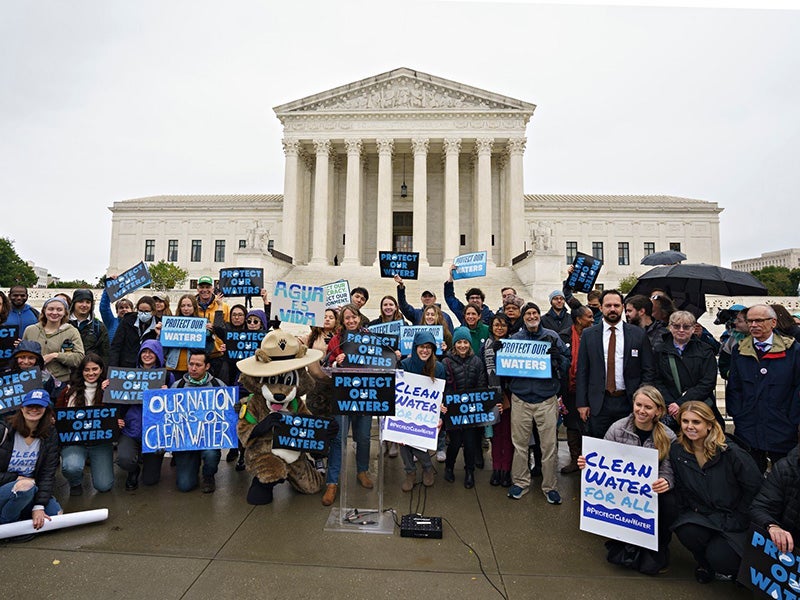The Supreme Court Will Decide the Future of Clean Water for Generations
Polluters' legal challenge aims to maximize profits at the expense of the health of communities and our environment
Contact
Today, the U.S. Supreme Court heard oral arguments for the case Sackett v. U.S. Environmental Protection Agency, deliberating what waterways and wetlands are protected under the Clean Water Act. The Supreme Court’s decision to hear Sackett v. EPA is another troubling sign that the new supermajority in the nation’s highest court is pursuing a deregulatory path. Based on an extraordinarily narrow reading of the law, the Sacketts and their industry allies asked the Court to strip protections from 45 million acres of the country’s wetlands.
Earthjustice filed an amicus brief to the Supreme Court on behalf of our clients — 18 Tribes who rely on waterways for food, economy, and culture — and are supportive of water protections.
“Congress passed the Clean Water Act to protect all our nation’s waters, and you can’t do that unless you protect wetlands,” said Sambhav Sankar, Senior Vice President of Programs at Earthjustice. “Today we saw even the Court’s conservative justices wrestle with the reality that all waters are connected, and the fact is that this industry-sponsored effort isn’t about protecting private property, it’s about radical deregulation. There will always be difficult line-drawing problems in environmental regulation, but time has shown that those lines should be drawn by scientists and politically accountable lawmakers — not unelected judges.”
The Sacketts brought their case to the Court hoping to persuade the new conservative supermajority to revisit Rapanos v. United States and rewrite the Clean Water Act. After the Court’s 2006 decision in Rapanos, the EPA and Army Corps developed a workable regulatory system to define which wetlands are protected by the Clean Water Act — namely, the ones that substantially impact downstream water quality. EPA and the Corps are now responding to concerns about the regulatory system by writing new regulations to further clarify the issue.
The Court’s decision to grant that request during an active rulemaking process — the result of a legal challenge brought by Earthjustice — demonstrates its willingness to disregard traditional principles of judicial restraint in service of a deregulatory agenda. But at today’s argument, we saw that agenda collides with the reality of environmental protection. As several justices recognized, Congress expressly designed the act to protect the “integrity” of our nation’s waters, and removing protections for wetlands — which filter pollutants, prevent harmful flooding, and more — would defy Congress’ purpose.
Congress enacted the Clean Water Act to protect all the “waters of the United States” to restore and maintain the chemical, physical, and biological integrity of the Nation’s waters. Today the Court struggled to reconcile the Sacketts’ and industry-sponsored arguments with the act’s broad language, Congress’ purpose, and with the reality that all waters are connected.
The government’s position — and that of the environmental community — is that we should decide which wetlands the act protects by considering the goals of the act (to protect water quality) and the science (the degree to which wetlands are connected to other waters).
The Sacketts want the Court to rule that the act only protects wetlands that are physically indistinguishable from navigable water bodies. As even some conservative justices acknowledged, this arbitrary line would defy the text and purposes of the act, decades of consistent legal interpretation, and the science of environmental protection. The Sacketts’ approach would seriously threaten our nation’s waters.
A Supreme Court decision is likely in early 2023.

Additional Resources
About Earthjustice
Earthjustice is the premier nonprofit environmental law organization. We wield the power of law and the strength of partnership to protect people's health, to preserve magnificent places and wildlife, to advance clean energy, and to combat climate change. We are here because the earth needs a good lawyer.